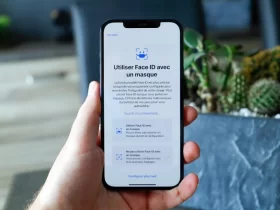With the rapid advancements in mobile technology, it’s no surprise that the terminology surrounding mobile networks can sometimes be confusing. One common source of confusion is the display on our smartphones, where we often see either “4G” or “LTE” indicating the network technology in use. You may have wondered why your phone displays “4G” instead of “LTE” or if there’s any real difference between the two.
In this article, we aim to shed light on this topic and address the confusion surrounding the terms “4G” and “LTE.” We will explore the evolution of mobile network generations, the difference between 4G and LTE, and why some phones display “4G” instead of “LTE.” By the end, you’ll have a clear understanding of these terms and what they mean for your mobile network experience.
Why Does My Phone Say 4g Instead Of LTE?
When your phone displays “4G” instead of “LTE,” it can be a source of confusion. However, the reason behind this is actually quite simple. “4G” stands for the fourth generation of mobile network technology, which includes LTE (Long Term Evolution) as one of its standards. In other words, LTE is a technology used to achieve the speeds and performance associated with 4G networks. The display of “4G” instead of “LTE” on your phone may be due to factors such as phone compatibility, regional variations in network terminologies, or carrier settings and software updates. It’s important to note that even if your phone shows “4G,” you are still using LTE technology for your network connection.
The Common Confusion Between 4g And LTE
The confusion between 4G and LTE arises from the marketing and branding strategies employed by carriers and smartphone manufacturers. To understand this confusion, it’s crucial to recognize the distinction between the two terms.
“4G” refers to the fourth generation of mobile network technology, which represents a significant advancement over previous generations. It promises faster data transfer speeds, lower latency, and improved network capacity, enabling a seamless user experience for browsing, streaming, and other data-intensive activities.
On the other hand, “LTE” stands for Long Term Evolution, which is a specific technology standard used to achieve 4G speeds and performance. LTE provides a smooth transition from the previous 3G networks, offering higher data rates and better overall network performance.
The confusion arises because some carriers and smartphone manufacturers started labeling their networks as “4G” before fully implementing the LTE technology. Initially, they employed technologies such as HSPA+ and WiMAX, which were significant advancements over 3G but did not meet the stringent technical requirements to be considered true 4G.
To address this marketing gap, the International Telecommunication Union (ITU) established specific criteria that networks must meet to be officially classified as 4G. However, as the demand for faster networks grew, carriers and manufacturers decided to use the term “4G” more liberally, leading to different interpretations and varying network capabilities.
As a result, you may see your phone displaying “4G” even when connected to an LTE network, indicating that it is utilizing the LTE technology to provide a 4G-like experience. In essence, LTE is a fundamental component of 4G networks, but the labeling can vary based on carrier marketing strategies and regional differences.
To ensure clarity, it’s recommended to check with your carrier about the specific network technology in use and the capabilities provided. However, rest assured that whether your phone shows “4G” or “LTE,” you are still enjoying the benefits of advanced mobile network technology with faster speeds and enhanced performance.
What Are The Difference Between 4g And LTE?
The terms “4G” and “LTE” are often used interchangeably, leading to confusion about their differences. However, there are distinct variations between the two:
Definition: “4G” (Fourth Generation) is a broad term referring to the fourth generation of mobile network technology, representing a significant leap forward in terms of speed, capacity, and performance compared to its predecessors. On the other hand, “LTE” (Long Term Evolution) is a specific technology standard within the 4G framework that provides high-speed data transfer and advanced network capabilities.
Technology: 4G encompasses various technologies, including LTE, WiMAX, and HSPA+. LTE, specifically, is a wireless communication standard that falls under the 4G umbrella. It focuses on delivering faster download and upload speeds, low latency, and improved spectral efficiency.
Speed and Performance: While both 4G and LTE are designed to offer faster data transfer speeds than previous generations, LTE typically provides higher speeds and better overall performance. LTE networks can deliver download speeds of several hundred Mbps (Megabits per second), enabling smoother streaming, quicker downloads, and a more responsive online experience.
Network Architecture: 4G networks are built upon an all-IP (Internet Protocol) based architecture, allowing for seamless integration with other IP-based networks and services. LTE specifically implements a packet-switched network architecture, enhancing efficiency and enabling faster data transmission.
Backward Compatibility: LTE is designed to be backward compatible with older network technologies. This means that LTE-enabled devices can still connect to 3G or 2G networks when LTE coverage is unavailable, ensuring continuous connectivity.
Global Standardization: LTE has achieved global standardization, with wide-scale adoption across numerous countries and carriers. This standardization ensures interoperability and allows users to enjoy consistent LTE performance when traveling or switching between networks.
What Are The Factors That Determine Whether A Phone Displays “4G” Or “LTE”
The display of “4G” or “LTE” on a phone can be influenced by various factors. While the exact factors can vary depending on the specific phone model and network provider, here are 10 common factors that can determine the network display:
- The phone’s hardware and capabilities play a significant role. Older phone models may not support LTE technology and can display “4G” instead.
- The phone’s compatibility with different network bands and frequencies used by the carrier can affect the displayed network technology.
- The specific network technology deployed by the carrier in your area can determine whether the phone displays “4G” or “LTE.” Different carriers may have varying technologies and branding.
- Carrier settings updates pushed to the phone can influence the network display. These updates can alter how the phone interprets and displays network technologies.
- Operating system updates or firmware updates released by the phone manufacturer can impact the network display. Software updates can introduce changes in network recognition and labeling.
- The availability and strength of LTE coverage in your location can affect the displayed network technology. If LTE coverage is weak or unavailable, the phone may display “4G” instead.
- Network congestion or high usage in a specific area can impact the network technology displayed on your phone. During peak times, the phone may switch to a lower-speed network, resulting in a “4G” display.
- When roaming on another carrier’s network, the network display can be influenced by the agreements between the home carrier and the roaming partner.
- In some cases, the type of SIM card used in the phone can affect the displayed network technology. Some older SIM cards may not support LTE connectivity.
- Different regions or countries may have their own terminology or branding for network technologies. This can lead to variations in the displayed network technology.
Explain The LTE (Long Term Evolution) Standard And Its Role In 4g Networks
LTE, or Long Term Evolution, is a standard within the fourth generation of mobile network technology (4G). It plays a vital role in the development and advancement of 4G networks by providing significant improvements over previous network generations.
Speed and Capacity:
LTE offers significantly faster data transfer speeds compared to previous technologies. It can support download speeds of up to several hundred Mbps (Megabits per second) and upload speeds of up to several tens of Mbps. This allows for smooth video streaming, faster downloads, and real-time online experiences.
Spectrum Efficiency:
LTE improves spectral efficiency, meaning it can carry more data over limited frequency bands. This optimization enables more users to connect simultaneously without compromising performance, ensuring a consistent and reliable network experience.
IP-Based Architecture:
LTE is built on an all-IP (Internet Protocol) based architecture, which streamlines data transmission and integration with other IP-based networks and services. This enables seamless connectivity and facilitates the convergence of different communication technologies, including voice calls over IP (VoIP) and multimedia services.
Lower Latency:
LTE reduces network latency, the time it takes for data to travel from the source to the destination and back. Lower latency translates into quicker response times, which is crucial for real-time applications like online gaming, video conferencing, and IoT (Internet of Things) devices.
Backward Compatibility:
LTE is designed to be backward compatible with previous network technologies, including 3G (such as UMTS and HSPA) and 2G (such as GSM and CDMA). This compatibility ensures that LTE-enabled devices can seamlessly connect to older networks when LTE coverage is unavailable.
Global Standardization:
LTE has achieved global standardization, ensuring interoperability across different networks and devices. This standardization enables users to enjoy consistent LTE performance while traveling or switching between carriers.
Final Words
In conclusion, the display of “4G” or “LTE” on your phone can be influenced by several factors, including the phone model, network compatibility, carrier settings, software updates, network coverage, and more. While the terms “4G” and “LTE” are often used interchangeably, it’s important to understand that LTE is a specific technology standard within the broader 4G framework.
Regardless of whether your phone displays “4G” or “LTE,” you can still enjoy the benefits of advanced mobile network technology with faster speeds, improved performance, and enhanced connectivity. The ultimate goal is to provide a seamless and reliable mobile broadband experience.
FAQ’s
Q: Is there a significant difference in performance between “4G” and “LTE”?
A: In practical terms, there is generally no significant difference in performance between “4G” and “LTE” since LTE is the technology used to achieve the speeds and capabilities associated with 4G networks. Both terms represent advanced mobile network technologies with high-speed capabilities.
Q: Can I upgrade my phone to support LTE?
A: Whether or not you can upgrade your phone to support LTE depends on the specific hardware and capabilities of your device. Older phone models may not have the necessary components to support LTE technology, while newer models are more likely to have LTE compatibility. It’s recommended to check your phone’s specifications or consult with the manufacturer or carrier for accurate information.
Q: Does displaying “4G” or “LTE” affect my internet speed?
A: No, the displayed network technology (“4G” or “LTE”) does not directly affect your internet speed. Both terms represent advanced mobile network technologies capable of providing high-speed internet. The actual speed you experience depends on various factors such as network coverage, network congestion, and your device’s capabilities.
















